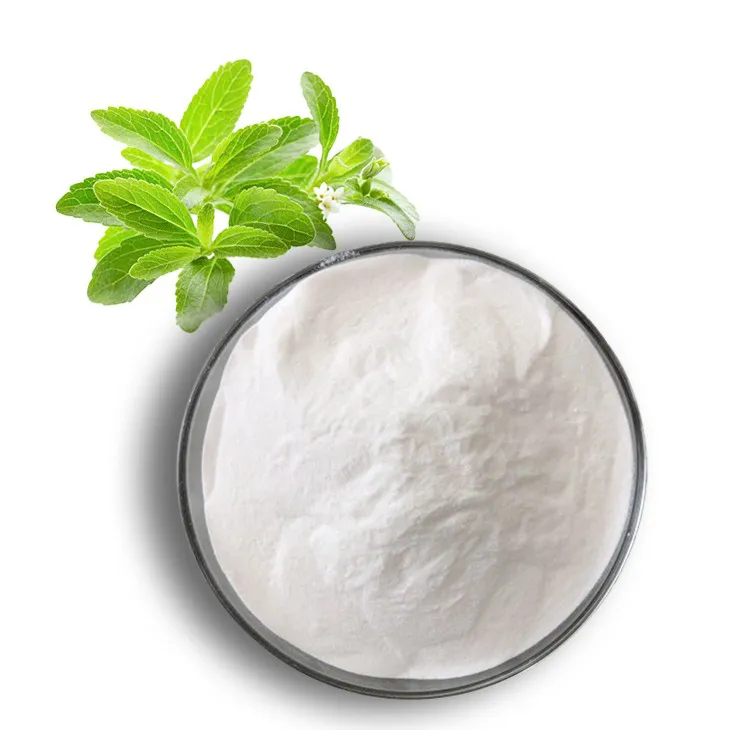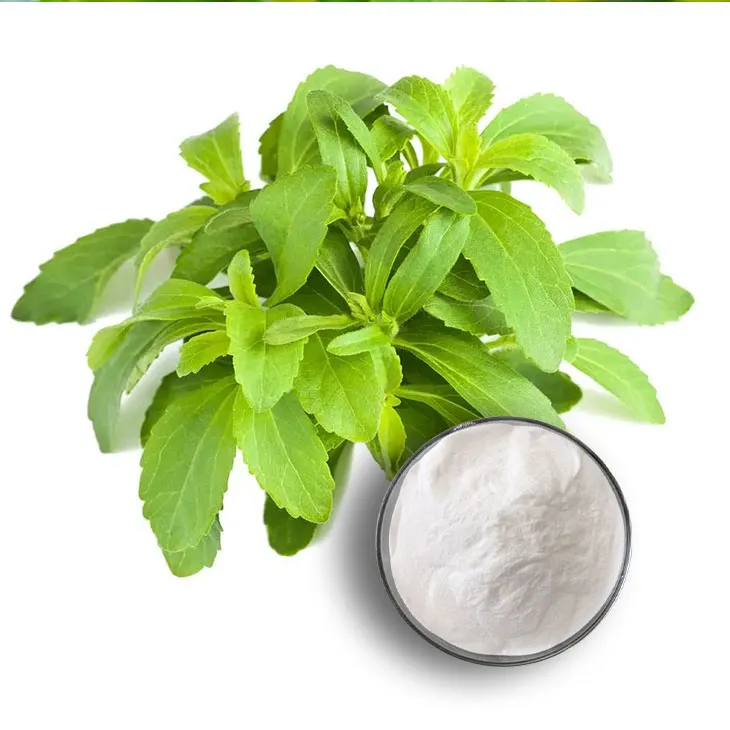- 0086-571-85302990
- sales@greenskybio.com
Sweetening the Future: Stevia Extraction's Role in Sustainable and Healthy Sweetening Solutions
2024-07-06

1. Introduction to Stevia
Stevia is a remarkable plant native to South America, particularly Paraguay and Brazil. It has been used for centuries by indigenous people for its sweetening properties. Stevia rebaudiana is the most well - known species of the stevia plant. What makes stevia so special is its ability to provide intense sweetness without the caloric content associated with traditional sweeteners like sucrose (table sugar) or high - fructose corn syrup.

2. The Process of Stevia Extraction
2.1 Harvesting
The first step in Stevia Extraction is the harvesting of the stevia leaves. Stevia plants are typically grown in a controlled environment, either in large - scale agricultural fields or in greenhouse settings. Once the plants reach maturity, which usually takes around 3 - 4 months, the leaves are carefully harvested. This is a crucial step as the quality of the leaves directly impacts the quality of the extracted sweetener.
2.2 Drying
After harvesting, the stevia leaves need to be dried. Drying helps to remove moisture from the leaves, which is essential for the subsequent extraction process. There are different methods of drying, including air - drying and heat - drying. Air - drying is a more natural method, but it can be time - consuming. Heat - drying, on the other hand, is faster but requires careful control of temperature to avoid damaging the active compounds in the leaves.
2.3 Extraction
Once the leaves are dried, the extraction process begins. There are several extraction methods, but the most common ones involve the use of solvents such as water or ethanol. Water extraction is a more natural and environmentally friendly option. The dried stevia leaves are soaked in water, and the sweet compounds are dissolved into the water. Ethanol extraction can also be used, especially for a more concentrated extraction. However, ethanol extraction requires more careful handling due to the flammability of ethanol. After the extraction, the resulting liquid contains the stevia sweeteners along with other compounds from the plant.
2.4 Purification
The extracted liquid then undergoes purification to isolate the stevia sweeteners. This involves various techniques such as filtration, chromatography, and crystallization. Filtration is used to remove solid particles from the liquid. Chromatography helps to separate different compounds based on their chemical properties, allowing the isolation of the sweet - tasting stevia compounds. Crystallization is then used to obtain the pure stevia sweetener in a solid form, which is more stable and easier to store and use.
3. Environmental Benefits of Stevia Extraction
3.1 Reduced Land Use
Stevia is a much more efficient sweetener in terms of land use compared to traditional sugar crops. For example, sugarcane requires large areas of land for cultivation. In contrast, stevia plants can produce a significant amount of sweetening power per unit area of land. This means that less land needs to be cleared and cultivated for stevia production, which helps to preserve natural habitats and biodiversity.
3.2 Lower Water Consumption
Sugarcane and beet sugar production are water - intensive processes. Stevia, on the other hand, requires significantly less water for cultivation and extraction. The reduced water consumption is not only beneficial for regions facing water scarcity but also for the overall conservation of water resources. For example, in arid regions, stevia can be a more sustainable sweetening option as it does not put as much strain on the local water supply.
3.3 Fewer Chemical Inputs

4. Health Benefits of Stevia
4.1 Low - Calorie Sweetening
One of the most significant health benefits of stevia is its low - calorie nature. For people who are trying to manage their weight or control their calorie intake, stevia provides a sweet alternative without the added calories of sugar. This makes it an ideal sweetener for diabetic patients as well, as it does not cause a spike in blood sugar levels like sucrose does.
4.2 Dental Health
Stevia does not promote tooth decay like sucrose does. Bacteria in the mouth feed on sugars and produce acids that can erode tooth enamel. Since stevia is not a fermentable carbohydrate for these bacteria, it does not contribute to dental caries. This makes it a healthier option for maintaining good oral health.
4.3 Antioxidant Properties
Stevia contains certain antioxidants, such as steviol glycosides. These antioxidants can help to protect the body against oxidative stress. Oxidative stress is associated with various diseases, including heart disease, cancer, and neurodegenerative disorders. By consuming stevia, individuals may potentially benefit from its antioxidant - rich profile.
5. Stevia in the Food and Beverage Industry
5.1 Beverage Applications
In the beverage industry, stevia has gained significant popularity. It is used in a wide range of products, including soft drinks, sports drinks, and bottled teas. Many beverage companies are switching to stevia as a sweetener to meet the growing demand for low - calorie and healthy drink options. Stevia - sweetened beverages can appeal to health - conscious consumers who are looking for alternatives to sugary drinks.
5.2 Food Applications
Stevia is also finding its way into the food industry. It can be used in baked goods, confectionery, dairy products, and processed foods. However, due to its intense sweetness, formulators need to be careful when using stevia in recipes. Adjustments to other ingredients may be necessary to achieve the desired taste and texture. For example, in baking, the amount of flour or fat may need to be adjusted when using stevia instead of sugar.6. Challenges and Limitations of Stevia Extraction
6.1 Taste Profile
One of the main challenges of stevia is its taste profile. While it is extremely sweet, some people find that it has a slightly bitter or licorice - like aftertaste. This can be off - putting for some consumers, especially those who are used to the pure sweetness of sucrose. However, through advanced extraction and purification techniques, as well as flavor - masking strategies, the taste of stevia can be improved.
6.2 Regulatory Hurdles
In some regions, there are regulatory hurdles regarding the use of stevia in food and beverage products. Although stevia has been recognized as a safe sweetener in many countries, in others, there are still restrictions or approval processes in place. This can limit the widespread adoption of stevia in certain markets.
6.3 Cost of Production
The cost of stevia production, especially in terms of extraction and purification, can be relatively high compared to traditional sweeteners. This is due to the complex extraction processes and the need for high - quality control. However, as the demand for stevia increases and technology improves, the cost is expected to come down over time.7. Future Prospects of Stevia Extraction
7.1 Technological Advances
With ongoing research and development, there are likely to be significant technological advances in stevia extraction. New extraction methods may be developed that are more efficient, cost - effective, and environmentally friendly. For example, enzymatic extraction methods could potentially be explored to improve the quality and yield of stevia sweeteners.
7.2 Market Expansion
As consumers become more health - conscious and environmentally aware, the market for stevia - based products is expected to expand. This will not only include food and beverage applications but also potentially extend to other industries such as pharmaceuticals and cosmetics. For example, stevia could be used in oral care products due to its dental - friendly properties.
7.3 Sustainability Initiatives
Stevia extraction is likely to play an increasingly important role in sustainability initiatives. As companies and governments strive to reduce their environmental impact, stevia's environmental benefits will make it an attractive option. This could lead to increased investment in stevia cultivation and extraction, further promoting its growth as a sustainable sweetening solution.8. Conclusion
Stevia extraction holds great promise in the development of sustainable and healthy sweetening solutions. Despite the challenges it currently faces, such as taste issues, regulatory hurdles, and cost of production, its numerous environmental and health benefits make it a viable alternative to traditional sweeteners. With continued technological advancements, market expansion, and sustainability initiatives, stevia is poised to play an even more significant role in sweetening our future in a more sustainable and healthy way.
FAQ:
What is stevia extraction?
Stevia extraction is the process of obtaining the sweet components from the stevia plant. The stevia plant contains natural sweeteners, and through various extraction methods, these sweet compounds can be isolated for use as an alternative to traditional sweeteners.
How is stevia extraction more sustainable than traditional sweetener production?
Traditional sweeteners like cane sugar often require large amounts of land, water, and energy for production. In contrast, stevia is a plant that can be grown with relatively less water and land. The extraction process also generally consumes less energy compared to the complex refining processes of some traditional sweeteners. Additionally, stevia plants can be grown in a variety of climates, reducing the need for extensive monoculture farming which can have negative environmental impacts.
What are the health benefits of stevia extracted sweeteners?
Stevia - based sweeteners are low - calorie or calorie - free alternatives to sugar. They can be beneficial for people who are diabetic or those trying to manage their weight, as they do not cause a significant spike in blood sugar levels. Also, they do not contribute to dental cavities in the same way that sugar does.
What are the common methods of stevia extraction?
One common method is solvent extraction, where solvents are used to dissolve the sweet components from the stevia leaves. Another method is water extraction, which is more natural and environmentally friendly. In water extraction, stevia leaves are soaked in water, and the sweet compounds are then separated from the plant material. There are also more advanced extraction techniques being developed to improve the purity and efficiency of the extraction process.
Is stevia extraction cost - effective?
While the initial investment in setting up stevia extraction facilities may be significant, in the long run, it can be cost - effective. As the demand for healthy and sustainable sweeteners grows, the economies of scale can come into play. Also, compared to some high - cost artificial sweeteners, stevia extraction can potentially offer a more affordable and natural alternative once the production processes are optimized.
Related literature
- Stevia: A Natural Sweetener with Promising Health and Environmental Benefits"
- "The Science Behind Stevia Extraction and Its Applications"
- "Sustainable Sweetening: Stevia's Role in the Future of Food"
- ▶ Hesperidin
- ▶ Citrus Bioflavonoids
- ▶ Plant Extract
- ▶ lycopene
- ▶ Diosmin
- ▶ Grape seed extract
- ▶ Sea buckthorn Juice Powder
- ▶ Fruit Juice Powder
- ▶ Hops Extract
- ▶ Artichoke Extract
- ▶ Mushroom extract
- ▶ Astaxanthin
- ▶ Green Tea Extract
- ▶ Curcumin
- ▶ Horse Chestnut Extract
- ▶ Other Product
- ▶ Boswellia Serrata Extract
- ▶ Resveratrol
- ▶ Marigold Extract
- ▶ Grape Leaf Extract
- ▶ New Product
- ▶ Aminolevulinic acid
- ▶ Cranberry Extract
- ▶ Red Yeast Rice
- ▶ Red Wine Extract
-
Sophora Flavescens Root Extract
2024-07-06
-
Resveratrol extract
2024-07-06
-
Wheat Germ Extract
2024-07-06
-
Maitake Mushroom Extract
2024-07-06
-
White mustard seed extract
2024-07-06
-
Chasteberry Extract
2024-07-06
-
Giant Knotweed Extract
2024-07-06
-
Medicinal Marshmallow Extract
2024-07-06
-
Lycopene
2024-07-06
-
Beta Carotene
2024-07-06





















